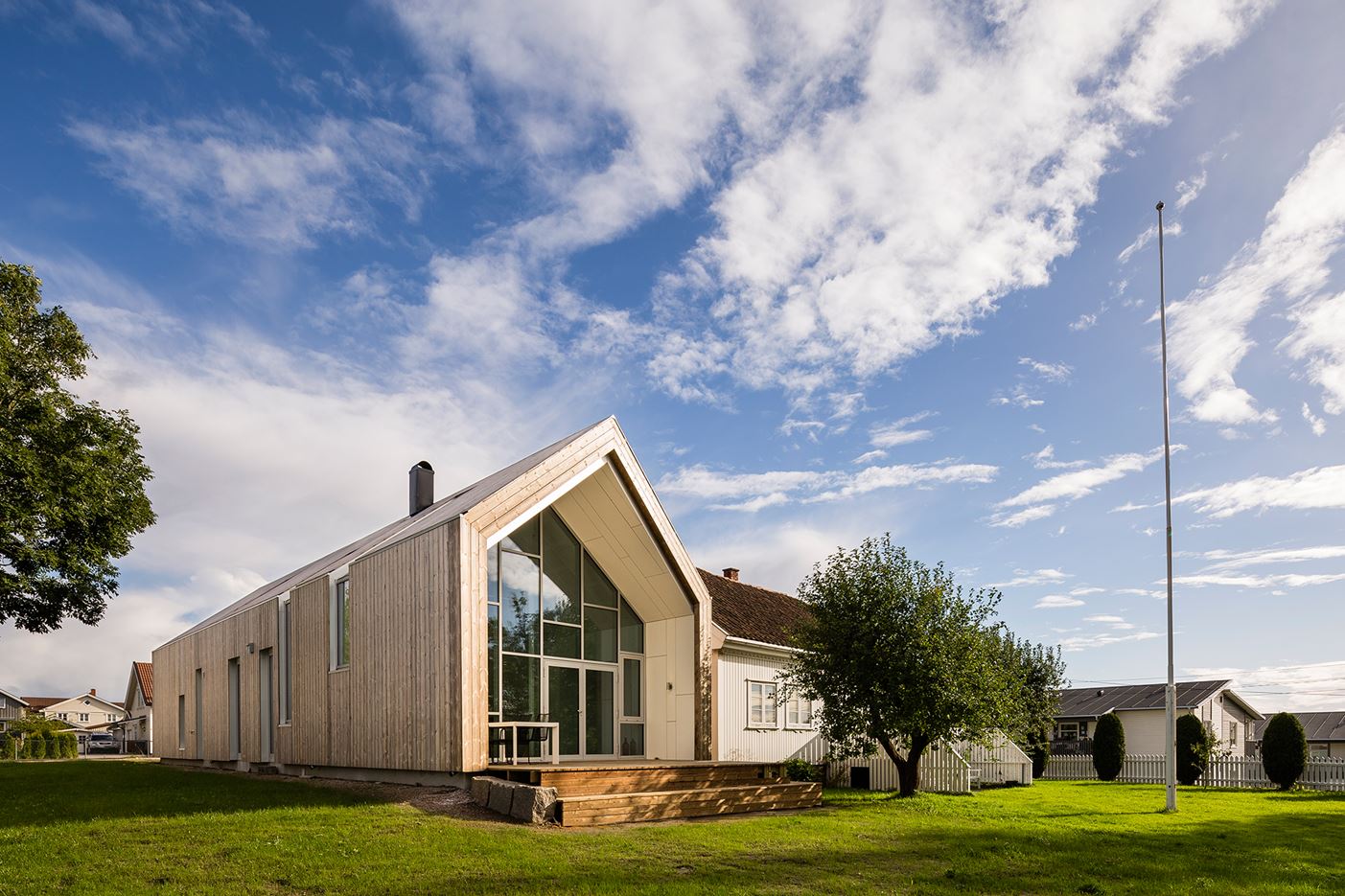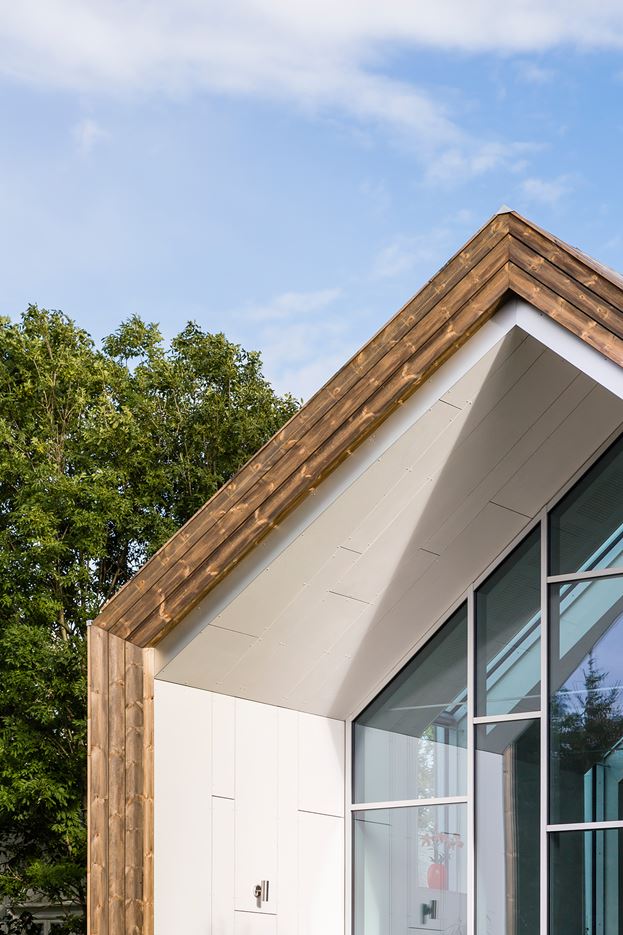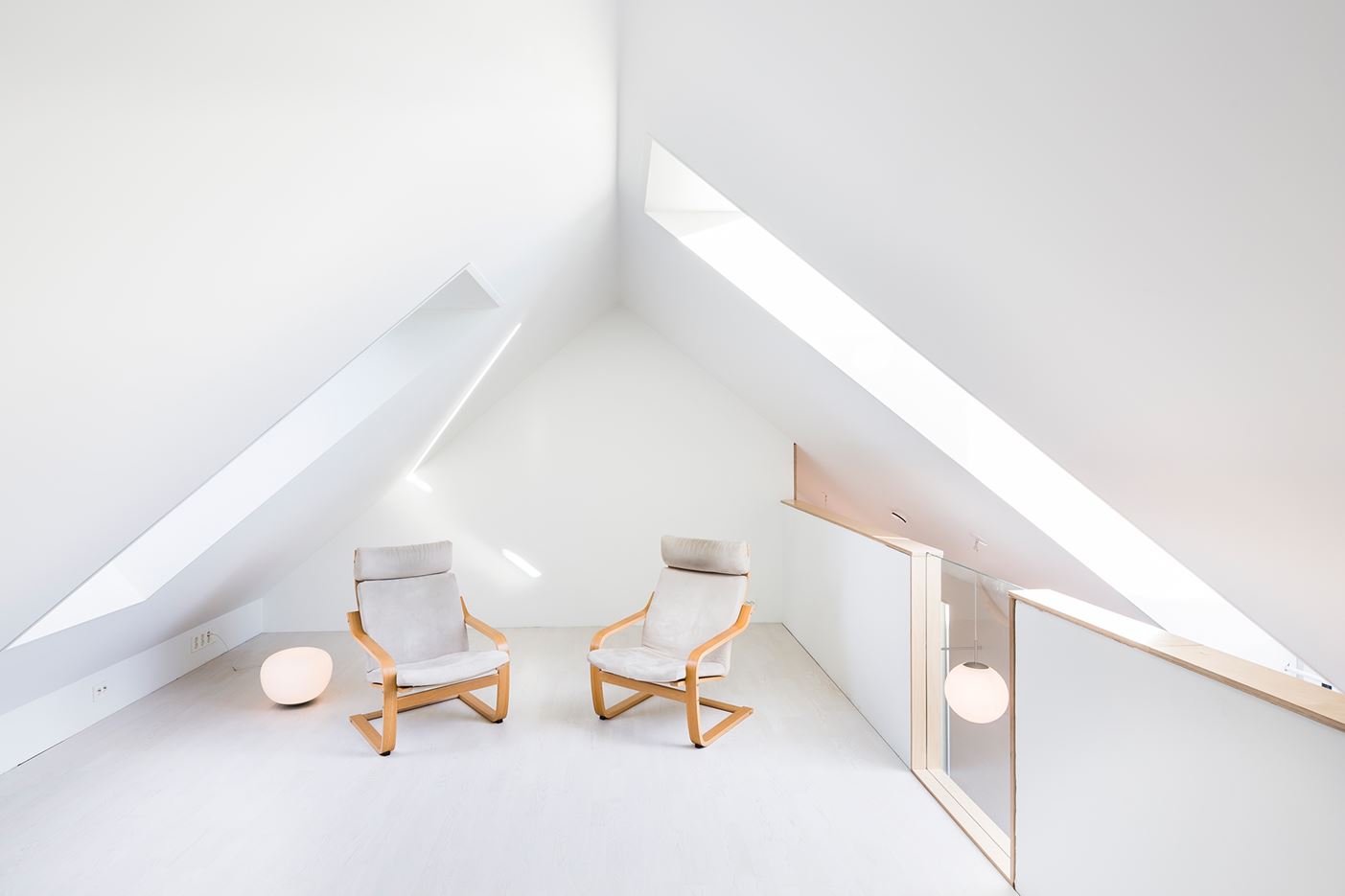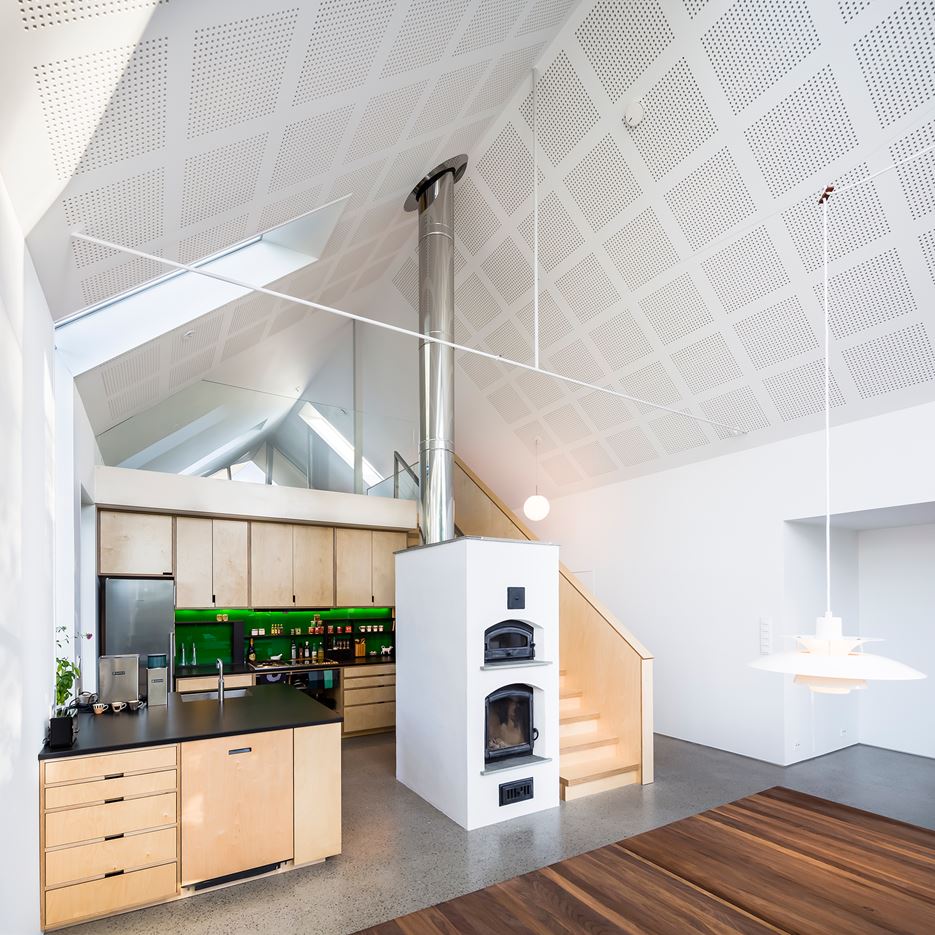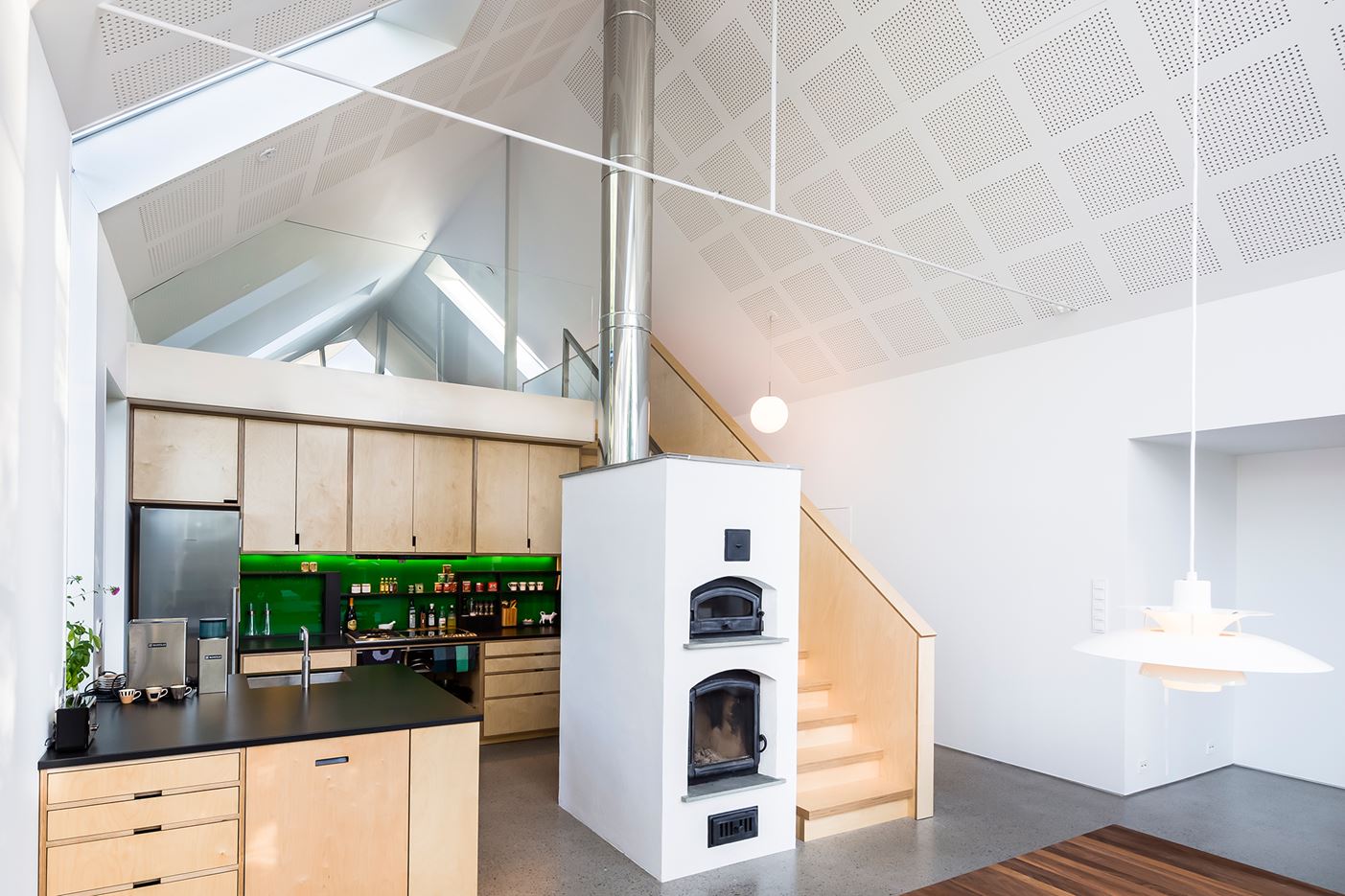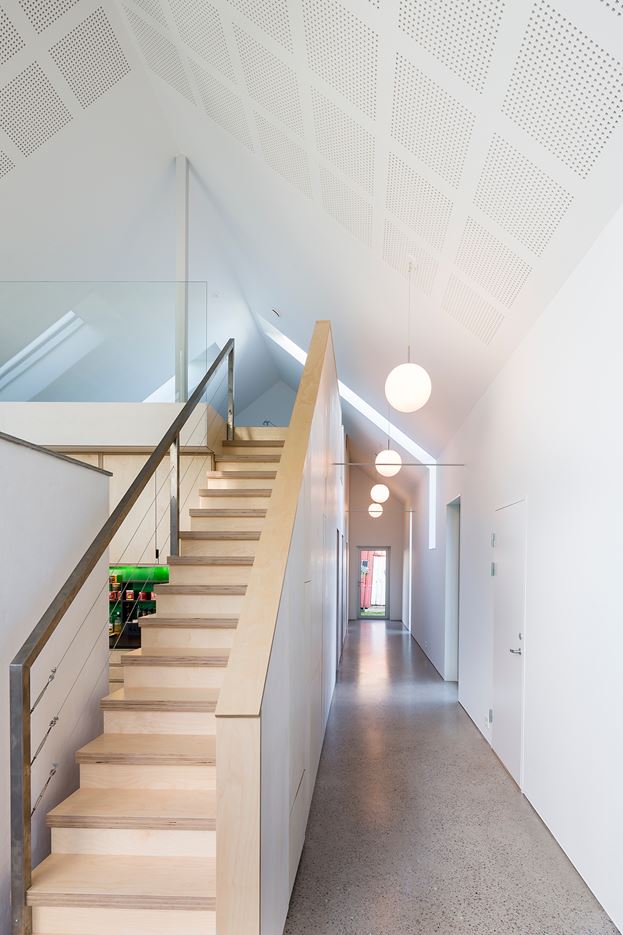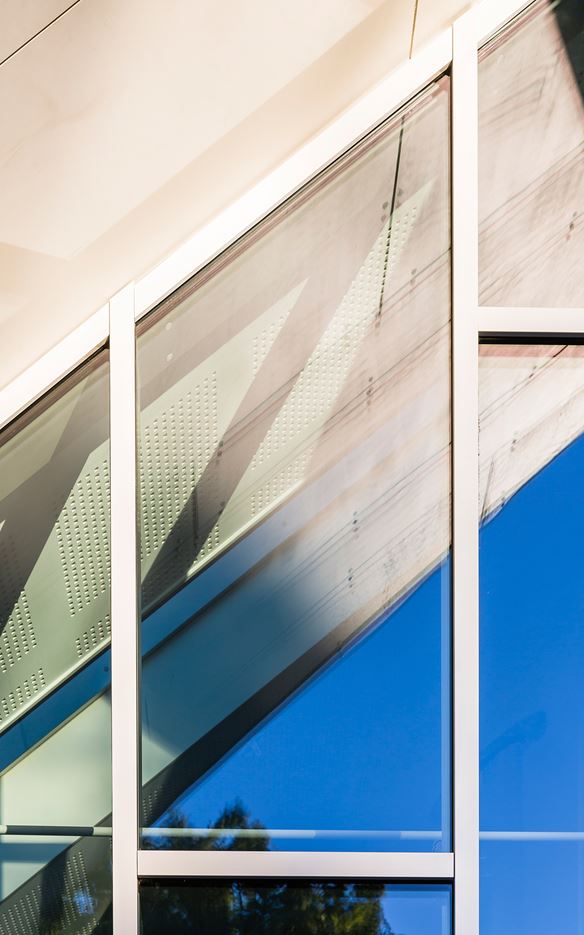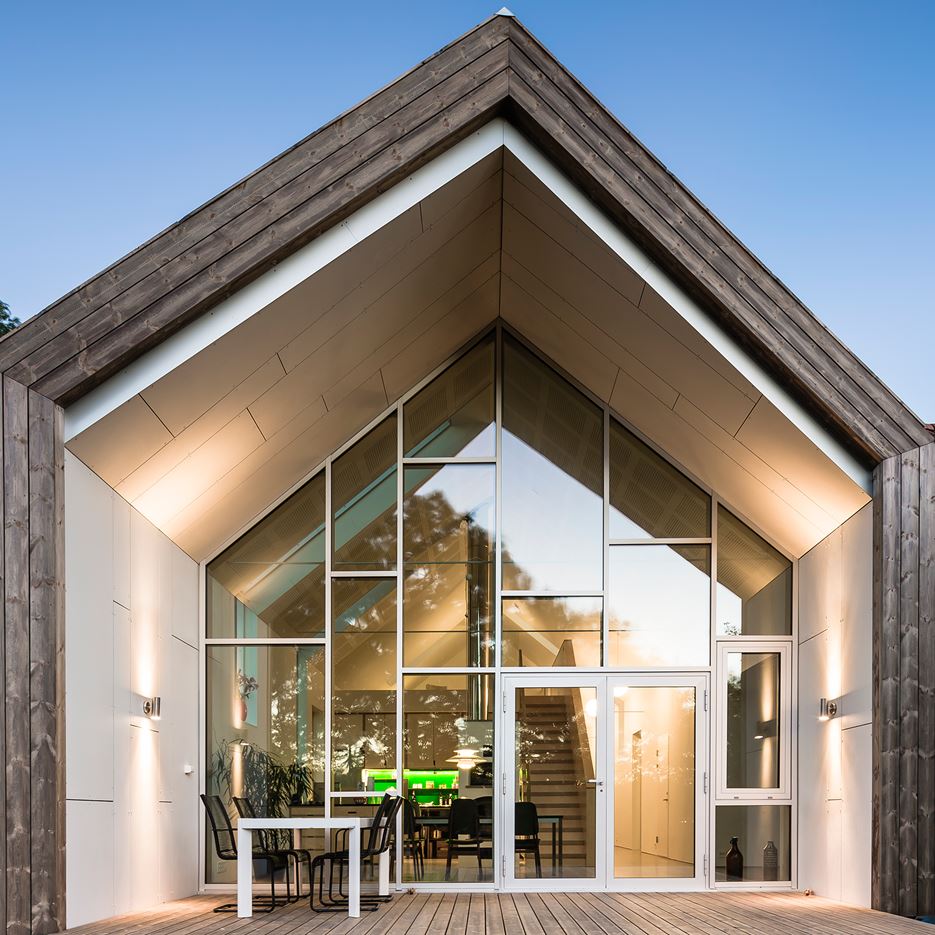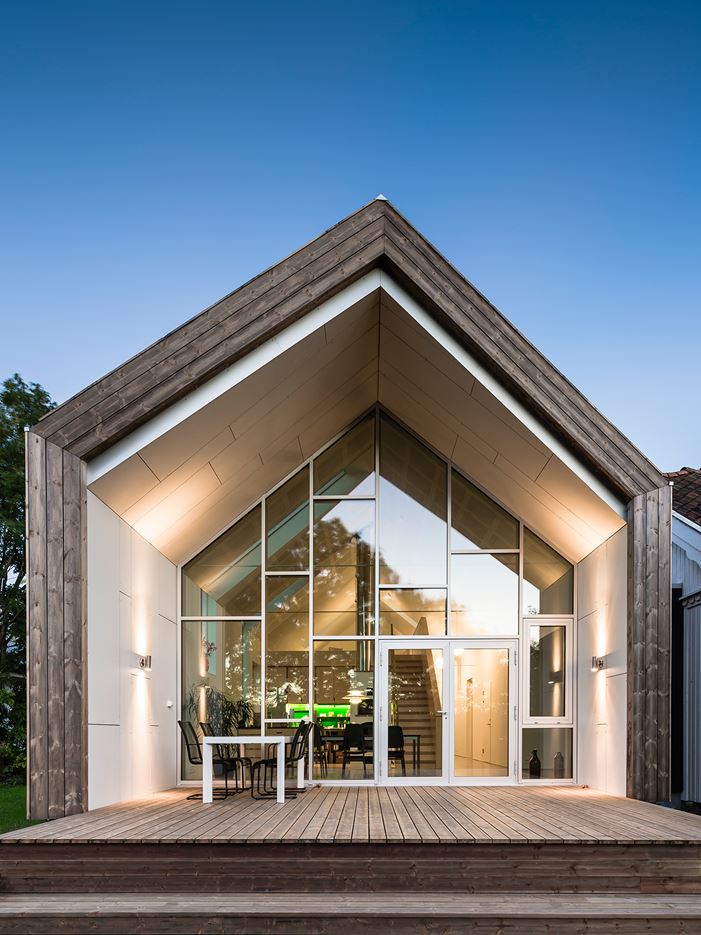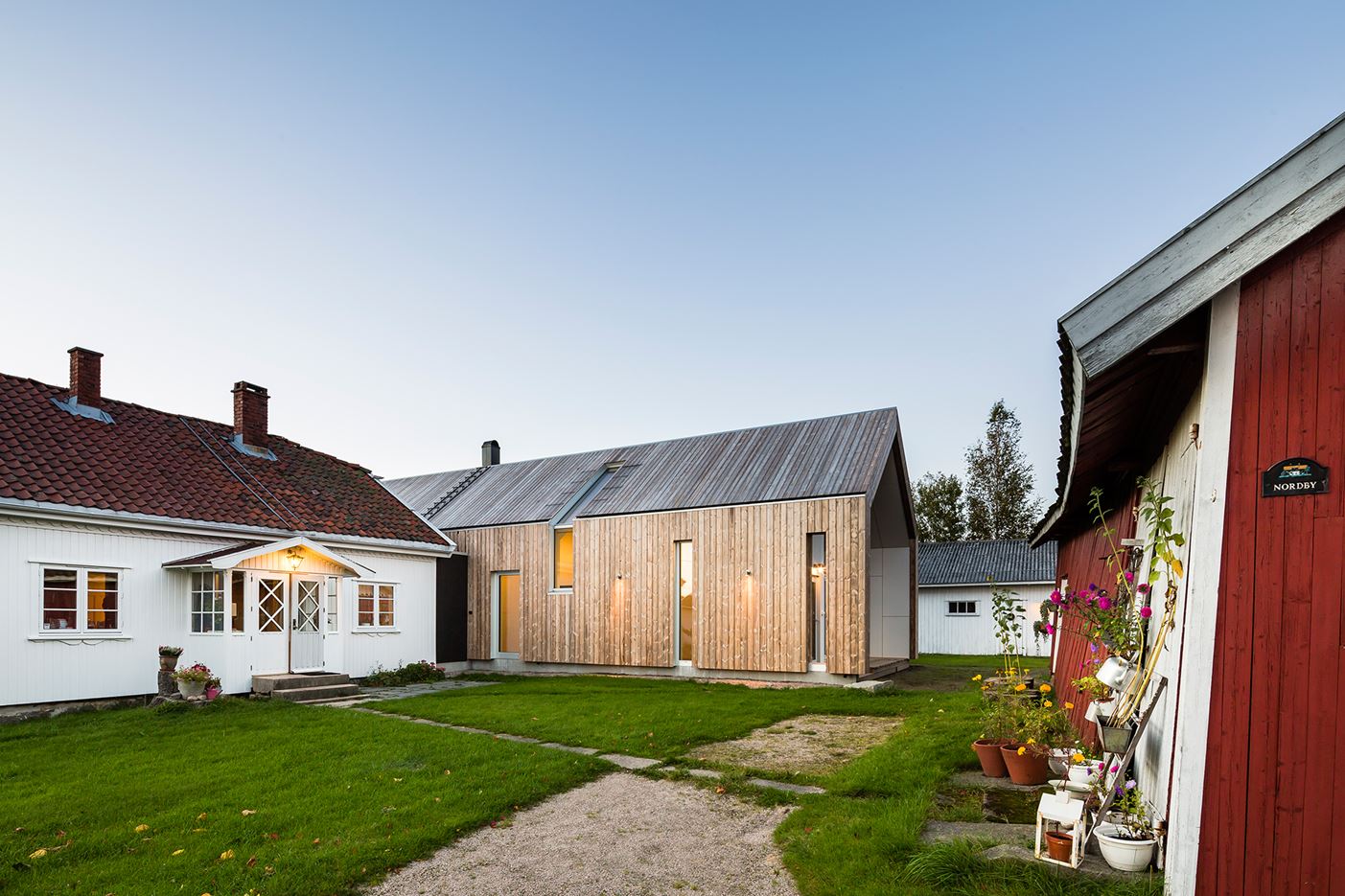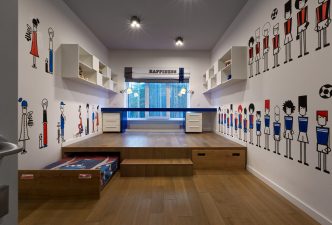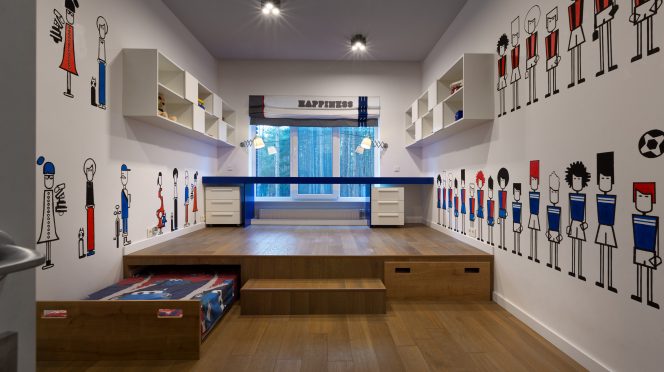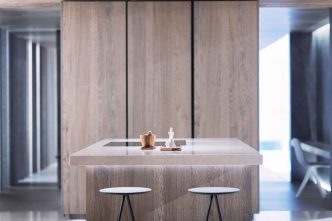Inspired by the original 19th Century design, a rundown farmhouse on the east side of the River Glomma – Norway’s longest and largest river – has been brought into the 21st Century by LINK architects.
The Lersch family bought the dilapidated farmhouse shortly after the millennium and were keen to preserve the historic building, intending to restore one of the last historic farmsteads, prominent in the area in the early 1900s. They sought to develop an annex to extend the existing residential property and redevelop the original triangular-roofed farmhouse building. Some sections needing to be demolished, other parts required significant attention.
The new building design was heavily influenced by the traditional gable roofed farmhouse The newbuild intends to modernise the antiquated aesthetic in a minimalistic manner. The beautiful setting was also paramount to the design and inspired the openness of the building’s sides facing the old garden. Glass and aluminium have been used extensively throughout. Both the roof and façade of the extension are clad with Kebony, chosen by the architects as it helped maintain the traditional style of the original farmhouse. Initially Kebony cladding has a deep brown colour – similar to that of tropical hardwoods – but when exposed to light and weathering over time the colour of the wood softens to adopt a delicate silver-grey patina, perfectly in keeping with the light tones of the wood panelling on the inner walls.
The wooden cladding gives the barn its striking external appearance and creates a natural look and feel, with an additional benefit of integrating sustainability into the build. The patented Kebony technology is a unique process that modifies sustainably sourced wood species with furfuryl alcohol, a liquid produced from agricultural crop waste. With the addition of heat the furfuryl polymer is permanently grafted into the wood cell wall, resulting in greatly improved durability and dimensional stability; making the wood resistant to biological decay and harsh weather conditions, without the need for expensive and environmentally-damaging treatments.
To further the eco-friendly credentials of the build, the ground floor is made of recycled concrete and houses an intricate heating mechanism wherein pipes embedded in the floor are supplied with hot water from a heat exchanger connected to a ground well. This utilises the constant subterranean temperature of the earth to heat the building in winter and dissipate heat when needed in the summer. Architectural innovations continue to the downpipes and gutters. These are cleverly concealed behind the cladding to ensure that water is drained away behind the façade whilst snow sliding from the roof far is directed away from the gutter. This inventive solution ensures the water drainage is kept free of ice and doesn’t freeze during the winter months, and preserves the beauty of the exterior.
Martin Ebert, LINK’s lead architect on the project commented: “This project has been fascinating to work on with the traditional Scandinavian design style interwoven with modern architectural elements. The Kebony cladding is a really exciting way to keep traditional architecture alive without the negative environmental impact associated with hardwood deforestation.”


